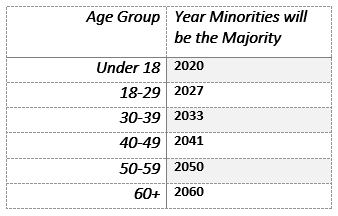|
It’s the time of the year that we either look forward to or dread. The time between Thanksgiving and Christmas is when evaluations are usually taking place. So it’s important that you get ready for that all important End of Year review. Below are 5 ways to prepare.
1. Schedule a Review Meeting with your Manager Sometimes your manager might be so busy that they miss scheduling the reviews. There are also times when reviews aren’t due at this time of year. However, it’s still worthwhile to ask your manager for feedback on your work throughout the year as compared to their expectations. It’s important that you prepare well and have a list of your achievements during the year which have either saved the company money, time, or expenses. Don’t take it for granted that your manager remembers all your achievements. More than likely, they don’t so it’s important to remind them of these areas for that all important consideration of a possible promotion or raise. If your manager doesn't schedule the meeting, then you should take the initiative to ask for the end of year review meeting. 2. Know What You Have Brought to the Table Evaluate your projects week by week, then month by month. If you didn’t take notes throughout the year, go through your emails and/or texts to try to put it all together. List each project you worked on and your achievements on that project. What was your part of the project? Did it add to the overall team success? Did it save the company money in regards to time or expenses. Did your project add revenue to the company? Did you lead a project? If your work saved the company money or add revenue, does it call for an increase in base or bonus? Do the math and if the answer is “yes”, then ask for the all deserving increase in base or bonus. 3. Practice Your Presentation It’s always a bit unnerving to toot your own horn but toot you must. Remember your manager supervises an entire team and they can’t possibly remember everything you did throughout the year so it’s up to you to make your case. Play out your presentation in your head, have your notes ready, create a PowerPoint presentation if you need to so you don’t miss any projects. Visuals are always effective. You can even practice your presentation with your trusted friends or family members. Confidence is one of the most important parts of your presentation. 4. Know Areas You Can Improve On You should also think about areas where you may have missed the point and list how you intend to improve on those areas. You can even ask for a small budget for self-improvement seminars in certain areas. These are all gains as well. Your manager will be impressed that you also understand areas that you need to work on and they will be happy to provide the assistance in that. Ask your manager which areas they feel you can improve on as well and ask for strategies they feel would help in that improvement. As long as they see that you truly want to grow and improve in areas that are important to the overall department/company success, you will have your manager on your side. 5. Make a List of your Goals for the New Year Not only do you prepare to present your achievements of the current year, but you also want to present your goals for the New Year. The goals you present should be your professional goals. However, you should also know how they pertain to your department/company. Your professional goals should also be to help your supervisor and your team shine and get ahead. Ask your boss what goals they have for you and for the department so you can incorporate those into your overall goals for the New Year and keep those goals handy so you can keep tabs of your progress which will also help in your review for the following year. When you prepare ahead of time and know your achievements from the current year, strategize how you can improve in the New Year, and list your goals for the New Year, you can go in with confidence to speak with your Manager and present your case for a well-deserved promotion and/or raise. At DCAProSearch, we can coach you through that thought process and be your sounding table in role playing. We Toast to your success with your end of year review!
2 Comments
Only two months until the end of 2019 and that means that year-end reviews are right around the corner. For some people this may mean raises, promotions, and good fortune while for others they may be getting feedback that they aren’t expecting. Regardless of which side you are on, it’s a good idea to conduct a self-assessment of how you would grade yourself so you can go into your meeting prepared to toot your own horn or utilize constructive criticism.
Create a Personal Deck of Achievements Many times, at work, it is easy for the days to become weeks and the weeks to become months and before you know it, you have worked on dozens of projects and reports that you and your bosses forgot you even touched. The easiest way to get recognition for your growth is to record it. Create an organized deck or spreadsheet of what you have worked on since your last review that you can show your boss. That way you aren’t struggling to remember what you did when called in to discuss your progress. Top 5’s and Not-so-Top 5s What are your strengths and weaknesses? It’s the most overused interview question, but also the most important to keep in mind for yourself to know where you have shined and where you may have fallen short over the year. This way you are able to identify areas where you should focus on during your year-end reviews, and areas that you need to better position yourself in for improvement. Weaknesses aren’t always weaknesses if you are able to show your boss that you are already on the path of improvement. Prepare an Improvement Potential Path A weakness or shortcoming isn’t the end of the world if you have a plan to better your skills in that area. If you have noticed you have a weakness, it is probable that your managers and coworkers have noticed too. Prepare a plan to improve your weaker skills before your manager addresses those weaknesses as a reason to pass you up for the promotion. This could be taking a class, asking for training, or taking extra time to complete a task. Your Knowledge, Skills, Attributes, and Other What do you know? What can you do? How do you work? What are your secret weapons? These are all questions that you should be able to answer about yourself and be prepared to tell your manager. In addition, you need to keep track of when you learned new knowledge, skills, and attributes to better trace your progress and self-improvement to justify that you are growing in your career. Know Where You Started and Where You’re Going It is impossible to track how far you’ve gone if you have no idea where you started. Similarly, it’s hard for your manager to give you direction if they don’t know where you are going. Be clear in voicing your goals within the company and your progress. That way all the key players in your career know what your next steps are and will keep you top of mind when looking to fill positions that align with your goals. While year-end reviews can be nerve-wracking, a successful self-assessment will prepare you for any feedback that you may receive. Before you go into your review, know where you have been and where you want to go. Contact your DCAProSearch recruiter to go over your career and set your career goals before going into these reviews to better understand what to expect and where you should be going. When we talk about the application process, there is always a lot of emphasis around the resume. It may seem unfair to have to fit all your years of experience onto one or two 8x11 inch sheets of paper, but unfortunately, that’s how it’s done. Candidates put so much work to make their resume true to them by incorporating design, long intellectual sentences, and every single project they have ever worked. The truth is, your resume might be saying too much, and have too much design, which could be working against you. There are common mistakes all candidates have made at some point, and easy ways to get around it.
Too Much Design With so many companies turning to candidate screening software, AI, and resume databases the vast majority of resumes sent to a company don’t even get looked at by a human. To make things worse, all the design effort you put into making your resume “pop” might actually be keeping the resume database from accurately inserting your information into the system. Text-based resumes are more likely to behave with keyword searches, candidate databases, and screening software giving you the best chance of getting your resume straight to your future boss. The information in the fancy designed resumes gets lost, this is especially prevalent among creatives that try to make their resumes stand out. You can make your resumes stand out without all the design formats. It’s best to keep your resume in a more traditional format and add some visually appealing logos or colors to break the monotony of the reading. Also, be sure your contact information is in a dark color, never white, as it will get washed out when transferring to the white backdrop of the databases. Acronym Crazy Every industry and company has acronyms that are pretty universal: PPC, B2C, KPI, SKU. However, keep in mind HR and people from other industries or departments often don’t understand department-specific language. A candidate was once telling us how their resume for a digital marketing application detailed that he had experience creating MAPs (Marketing Automation Programs) that could integrate with GA (Google Analytics) for real-time data. HR’s Response: “Sorry, we aren’t looking to expand into Georgia at this time, nor do we have any need to integrate our systems with any federal or state maps." If you are going to use an acronym, spell it out first with the acronym in parenthesis so the reader knows what this acronym means if they read it later on thru the resume again. Disorganized Format The average resume gets looked at for six seconds. That is not much time for you to get your experience across if they have to read every single word on the page to understand what experience you have. Utilize styling and format to guide their eyes where you want them to go. Put your most relevant information as the top bullet points. Increase the size of your headers (company and position). Utilize LIGHT design techniques to set aside any points that should be focused on or highlighted. While your resume shouldn’t have too much design to confuse resume bots, it should still be intuitive to the reader. Unnecessary Context Clues It’s possible for your resume to say too much about you. Having obsolete programming languages, operating systems, or programs will age you and make you seem old school. Similarly, keeping your sorority position on your resume after you graduate will make you appear inexperienced. Too many volunteer positions means you might stretch yourself thin. Look for context clues that might give the wrong impression of you, and limit what you decide to put on your resume. Out of Scope While you want your resume to show that you are well rounded, you also need to express that you can excel in your given department. Make your resume as relevant to the job requirements and qualifications as possible. We call this a ‘you need, I have’ or the ‘backward resume approach. Find the job requirements from a similar job posting and write your resume based on what you find out is needed to succeed in the position. Your resume should be able to check off all requirements asked of you plus added skills that are relevant to the position. Irrelevant information is taking up valuable space and the reader’s time. If you have various distinct skill sets, have different resumes for different positions. Resumes are the art of giving the hiring manager enough to want to meet you, but not too much to overwhelm them. At DCAProsearch we have 20+ years of experience in recruiting and have seen the good, the bad, and the ugly of resumes. Give us a call if you are not sure where your resume stands, or if you are looking for the perfect candidate to be part of your company team. We will never overwhelm you with resumes but will send you the top 3-5 candidates that fit your requirements. Let me let you in on a recruiting secret. In the recruiting world, there are average candidates, and then there are the Most Placeable Candidates (MPCs). An MPC is a candidate who we are confident will not only meet but exceed the expectations of a given or potential client. With that being said, if you are not an MPC right now, that doesn’t mean you can’t become one down the road. MPCs are based on two things: our clients and what we know about your career.
Although there isn’t much you can do to determine our book of clients or what they are searching for, you can ensure that your resume and career reflect what we are looking for in regards to potential MPC status once the right client comes along. 1) Loyalty to their Work While it is great to have choices in your career, we want to see that you see your role or project through at a company. It may be attractive to jump from job to job after only a year or two, but that doesn’t look promising to us or our clients. When our clients hire for a job, they want you to remain with the company for a minimum of three years and gain greater responsibility. Now, this doesn’t mean you have to stay at only one or two companies your entire career, but you should exhibit that you stayed with each company you worked at for a significant period of time. 2) Clear Career Progression Remaining loyal to your company and remaining loyal to your job title are two very different things. In your career, we expect to see you move throughout your career in a timely manner. That means getting promoted, taking on greater responsibilities, or taking on new roles that expand your skillset. When you are stuck in a role for longer than what is considered the norm it tells us that you were not performing above expectations or that you didn’t have the courage to look for opportunity elsewhere. 3) Wide Range of Capabilities If you want to be an MPC for multiple clients, you need to fit and exceed the expectations of multiple clients. A wide range of capabilities allows you to perform a wide range of tasks that can work for various job positions. If you are a chameleon and have the skills that allow you to adjust to any role be sure to display this on your resume or send us various drafts of your resumes that focus on different skill sets. One example of this is an MPC of ours who has provided us with her Digital Resume, her Account Planning Resume, and her resume with a mix of both. 4) The WOW Factor This is something that is harder to put a finger on, but the best way we can explain it is that if you can make us audibly “wow” while we are looking at your resume, talking to you, or looking at any supplemental material, that is a good thing. This can be anything from creating a viral campaign to circumnavigating an impossible task. More than anything, this is something that makes us excited to see more of your work and should make the client excited to imagine what you could be doing with them. 5) Measurable Results It is one thing to make us go wow, it is another to prove the impact of your work. When we present you to a client we want to be assured, without bias, that your work has exceeded expectation. The best way convince us and the client of that is to give quantifiable results. How much did your promotional strategy increase sales? Was your conversion rate off the charts for your digital campaign? While numbers aren’t everything, they do give us an unbiased measure of your work and performance. 6) A Strong Recruiter Relationship More than anything we want to get to know you. 9 out of 10 candidates will only send their resume to us one time and never follow-up. This is an easy way to be forgotten. We want to see our MPCs build a relationship with us. Get on the phone and talk us through their career progression and what their goals are for future positions. The more we know about you, the more we are able to advocate on your behalf to our clients. Don’t be a needle in the LinkedIn haystack. We are always looking for new MPCs and re-evaluating the needs of our clients to determine who the best-fit candidates are. Do not let yourself be overlooked by not taking simple steps in your career or forgetting to keep a relationship with your DCAProSearch recruiter. If you are a company in search of a Most Placeable Candidate give us a call and we would be happy to learn more about how your needs match up with our talented candidate pool.  Diversity in the workplace has been praised as not only being ethical but a smart business decision. However, the main question that stumps passionate diversity advocates is, “How will investing in diversity make us money?” In, a perfect world, arguing that investing in diversity is the ethical thing to do would be enough for any hiring manager. Unfortunately, most of us live in the business world where nothing is done unless it helps raise the bottom line, and now it is up to you to prove that diversity does exactly that. Admittedly, it’s a difficult argument to quantify. Saying that adding diversity initiatives would add X amount of dollars to the bottom line would be oversimplifying the benefits of diversity because the exact benefits are hard to trace. Lucky for you, we’ve put together the business case that you have been looking for. Whether you are a skeptic of diversity or a diversity devotee, the numbers prove that diversity works. Diversity is an Expectation for Top Talent Job seekers are beginning to expect companies to have a diverse workforce and value diverse employees. According to Glassdoor, 2 in every 3 active and passive job seekers said that a diverse workforce is an important factor when evaluating companies and job offers. According to a Glassdoor study, when asked how important a diverse workforce is when evaluating companies and job offers 67% of respondents indicated that diversity was important or very important to their decision. When broken down, the numbers were even higher among women (72%), African Americans (89%), Hispanics (70%), Asians (80%), and millennials (86%). However, nearly 6 out of 10 employees think their company should be doing more to increase diversity. Therefore, by not investing in diversity efforts you are actively persuading top talent to look elsewhere for the diversity of thought they are looking for. Higher Financial Performance McKinsey & Company published a study in 2018 correlating higher gender and ethnic diversity to higher earnings before interest and taxes (EBIT). The study concluded that companies in the top quartile of gender diversity had a 21% higher likelihood of above-average financial performance than companies in the bottom quartile. Similarly, companies in the top quartile of ethnic diversity saw 33% higher likelihood of having above-average financial performance than companies in the bottom quartile. This is in part to diverse teams having more innovative R&I, enhanced group think, greater insight into real-world perspectives, quick access to cultural ambassadors, new product concepts, and introduction to new markets. Greater Innovation Boston Consulting Group (BCG) came out with a similar study concluding that there existed a statistically significant correlation between the diversity of management teams and innovation. Companies that had higher diversity within management saw 19% higher innovation revenue than companies with below-average diversity. A Harvard Business Review study tied this correlation to the fact that diverse teams understand diverse market needs, leading to more relevant product development that meets real-world needs versus non-existent problems. A 2017 Harvard Business Review report found that teams with higher cognitive diversity were 53% more effective and efficient in completing cognitive tasks than less diverse teams. From being able to identify sore spots in brand marketing to revealing new product and research opportunities, multicultural talent brings new perspectives and solutions. Racial Minorities are only Getting Larger The Brookings Institute estimates that minorities will make up the majority of the United States population by the year 2045. The Hispanic community is set to see the fastest growth in population. However, all minority groups are forecasted to see steady growth as well. By 2045, whites will make up 49.7% of the United States population, while Hispanics will make up 24.6%, African Americans 13.1%, Asian’s 7.9%, and all other racial minorities 5%. If we look at the racial demographics by age in the table, minorities will be the majority of the workforce even sooner. Therefore, by delaying diversity initiatives you are isolating young talent and simply delaying the inevitable. Not only is diversity the right thing to do, but it would be a mistake to ignore or delay the benefits of diversity in the workplace. Although many skeptics still believe the financial benefits of diversity are non-existent or not proven, hundreds of companies around the world have proven that diversity initiatives are beneficial, if not necessary, to grow in today’s consumer-driven market. That is why DCAProsearch is dedicated to diversifying the marketing and advertising space with top diverse talent because we believe that diversity isn’t only the right thing to do, it is the way of the future. Whew! You finished the interview you have been sweating for, and now all there is to do is wait to see if you got the job. Hate to break it to you but, if after your interview all you’re doing is waiting, you are lowering your chances of getting that job. If you really want the job, be proactive and show the hiring team that you are invested in the company and in this position. If you do nothing you are not giving the interviewers anything to remember you by and allowing yourself to be overshadowed by a candidate who does take these steps. While these steps may seem like basic courtesy, in a world where courtesy is a lost art, these actions speak volumes.
Thank the Front Desk Receptionist and Secretary by Name When you first arrived for the interview, you were likely greeted by a front desk receptionist or secretary who told you to have a seat while he/she calls the hiring manager. Little did you know that while this may have seemed like an innocent interaction, this was also part of the interview. Oftentimes, hiring managers are utilizing their front desk staff to screen employees outside of the interview to assess how candidates interact with people without their “interview face.” Be sure to take note of their name and make small talk with them if it seems appropriate. After the interview is over, make it a point to thank them by name on your way out and finish any conversation that may have been cut short when you were called in. Provide a Follow-up It’s essential to follow-up with your hiring manager and other interviewers after the interview. In this follow-up, first thank your interviewer for taking the time to meet with you and to provide details on the position and company. Summarize a few of the responsibilities/requirements that the interviewer mentioned and list how your experience meets those areas. End your letter by expressing your continued interest in joining their team. If appropriate, include another subject that was talked about during the interview to keep the conversation going. This means you have to keep track of what was discussed during each interview so you can provide supplemental information in your follow-up. This could include anything from asking again for the restaurant recommendations your interviewer gave you, providing specifics on your portfolio, or sending collateral of a certain project you worked on which the interviewer may have asked for. Email follow-up after the interview should be sent that same day or the day after. Keep in mind that the interviewer might be looking at this part of the process as a continuity of the interview as this is a reflection of your follow-up skills after client meetings. Send a Hand-Written Thank You Card When was the last time you received a hand-written note from a friend or colleague? Probably a long time ago. The same goes for your interviewer. Sending a hand-written note to their office is a surefire way to stand out among other candidates. Since it takes 2-3 days for snail mail to get there, this should be in addition to your timely follow-up “thank you” email. This wholesome act shows that you are genuinely invested in the company and want the position. The best part, because of snail mail, this letter will get to them a few days after the interview which puts you top of mind again. It will put a smile on the interview’s face and bring good feelings when you are brought up again for consideration. Call Your Recruiter If you were approached about this position from an outside recruiter be sure to call them the same day after your interview. They are there to help you dissect how your interview went and remind you of the steps you should be taking to make yourself stand out. Additionally, your recruiter is likely to also call the client later the next day and can relay any information you may have forgotten to mention, address any concerns you had, and continue to promote you while you are not there. Keep in Contact Whether you get the job or not keep in contact with every person who was involved in your interview process. After you get the results, send them an additional thank you and ask to keep in contact. If they liked you, they will keep you informed of other positions that open up within the company and can even serve as a mentor from within the industry. It would behoove you to build a relationship with them and keep them updated on what you are doing. Used correctly, an interview can be used as the most powerful form of networking that can open doors you may not have expected. While the interview is important, oftentimes it is what you do after the interview that has a bigger impact on whether you get the job or not. Be sure to continue to stand out before, during, and after the interview process by staying on their mind with these tips. None of these steps take too much time out of your day, but they make all the difference in how you are remembered. ---------- About DCAProSearch DCAProSearch specializes in recruiting premium multicultural and general market professionals in advertising and marketing who excel in the contemporary reflection of today's diverse cultural and digital landscape. At DCAProSearch we strive to give our clients the Distinctive Client Advantage, meaning we only present premium candidates that we are certain will strengthen your power teams. Culture Marketing is leading the way, and DCAProSearch understands that these changes require a unique talent. This is why our executive recruiters are dedicated to finding professionals with experience and passion in multicultural advertising and diversity marketing to target your specific culture market needs. When it comes to what an executive recruiter does, not many people can give you a solid definition. If you ask a client, they will tell you that we find them top tier talent for their hard to fill positions. If you ask a candidate, they will tell you we find them jobs. However, if you ask a recruiter. we will tell you that we create an ever growing talent network consisting of skilled active and passive candidates that we use to uniquely identify top candidates within that network who meet and exceed client talent needs.
Because clients and candidates alike can’t identify exactly what an executive recruiter does for them, they also miss out on so many benefits that we are able to provide. If you think that you are only getting one service out of your recruiter, think again because we are able to provide so much more. We are experts in our industry, and clients and candidates alike should be utilizing their relationship with a recruiter for more than just finding new talent or a new job. Client Tips Recruiter as an Industry Insider Having a recruiter on your side is like trading with insider knowledge, except legal. We are always on top of industry news and are tracking trends on the daily basis. After all, the signs of big industry news can always be traced back to what companies are hiring, who they are hiring, and who they are letting go. Recruiters know how to read the tea leaves, all you have to do is ask. Recruiter as a Confidant While we are ready to tell you the news on the industry, we will never spill your news. We are proudly bound by client privilege, which means you are able to confide in us about upcoming changes in leadership, a new department opening up, or other office news that you need talent for. We then are able to silently seek out candidates for you to look at before the news even breaks. Recruiter as an Ambassador Your job boards are likely to only bring you lackluster candidates who have been sending their resume to anyone who will take it. However, a recruiter is your ambassador to the passive candidate network. These are professionals who are already proven and successful in the prime of their career, but who are not actively looking. Let us be your ambassador instead of relying on outdated resume books and job boards. Recruiter as a Hiring Guide Believe it or not, according to leadershipIQ a staggering 46% of new hires are considered mis-hires within the first 18 months. The reason, faulty hiring practices. An executive recruiter can guide on improving how you screen candidates and lead you to the right choice. For example, at DCAProsearch we created our Diversity Recruiting Guide to help companies with recruiting and retaining diverse talent. Candidate’s Tips Recruiter as a Magnifier There is a difference between being an applicant and a candidate. You’re an applicant if you simply submit your resume via on online link and hope for a response. With a recruiter vowing for you, you are instead a highly sought after candidate who has more legitimacy in the eyes of potential employers because you are being backed and talked up by a recruiter. Recruiter as a Mentor Who else is going to take the time to sit down with you and go over your resume, formulate a perfect thank you letter, or review interview success tips? When you trust us throughout the entire application process we are there for you to answer any question no matter how dumb it may feel. However, that does come with a catch. The only way we can help you is if you confide in us before, during, and after the hiring process. Why, because the application process doesn’t end with the interview, there are countless other factors you need to know that we can only tell you when you build a relationship with us throughout your career. Recruiter as a Career Guide Would you want to stay held back in the 10th grade even though you’re ready to graduate to 11th? Of course not. However, that is what too many professionals do within their careers. They remain stagnant in one position, not knowing they are ready to move up in their career progression. Recruiters know where you should be in your careers and what you should be seeking as your next strategic move. Ask a recruiter if you have stayed too long, and how you can advance your career. -- About DCAProSearch DCAProSearch specializes in recruiting premium multicultural and general market professionals in advertising and marketing who excel in the contemporary reflection of today's diverse cultural and digital landscape. At DCAProSearch we strive to give our clients the Distinctive Client Advantage, meaning we only present premium candidates that we are certain will strengthen your power teams. Culture Marketing is leading the way, and DCAProSearch understands that these changes require a unique talent. This is why our executive recruiters are dedicated to finding professionals with experience and passion in multicultural advertising and diversity marketing to target your specific culture market needs. This is going to be hard hitting on some people, but we need to stop relying on the words Diversity and Inclusion. Why? Because the modern institution of diversity and inclusion allows companies to pat themselves on the back for doing a few things, while allowing them to fall short on the promise they made to minority employees. Simply relying on D&I is limiting us on how we look at recruiting and retaining diverse talent. Although I firmly stand behind the values and meaning surrounding D&I, the institutions companies have created around D&I need to be redefined and expanded to the point where current definitions of diversity and inclusion are considered obsolete.
As an executive recruiter, I specialize in the area of diversity recruiting. However, my goal is for the candidates and clients we match to grow together through their career and business practices. What we've realized is that diversity initiatives alone may not be enough to ensure success. Companies may be able to attract multicultural talent, but when there is no real effort in transforming culture, D&I policies and initiatives that exist to make diverse voices feel valued and respected are bound to fail. Diverse employees will not be able to thrive within the company and will leave the company within a year or two at most. Whereas clients that actively promote, celebrate, and empower diversity, equity, and inclusion (DEI) are where we see our clients and candidates thrive and grow together for years to come. If the culture isn’t already inclusive, you’re not ready for diversity When companies start seriously thinking about diversity and inclusion, it is typically an afterthought based on complaints by unhappy employees, or an exodus of minority employees. Even the name “Diversity and Inclusion” seems to imply that the order is diversity THEN inclusion. However, a design set up on securing vast amounts of diversity talent before establishing a culture of inclusivity is already designed to fail. Before companies seek to expand in hiring diverse mindsets, they should observe the diversity that already exists within the office and ensure that inclusive practices already exist within the workplace for current employees (ex: parents, age groups, gender). When the company then seeks to attract new forms of diversity, they can simply expand on those practice already in place and create new policies as needed rather than scrambling to create something from scratch. ‘Diversity first’ puts the burden on minorities to create inclusion For many companies the reality of ‘diversity first’ has already hit and they are scrambling to create inclusion programs. Unfortunately, this is putting an undue burden on minority employees who have been tasked with either learning to adapt to a non-inclusive environment or with designing inclusion for themselves and others like them in the company. Both of these tasks require minority employees to take on responsibility above and beyond what their job calls for. This can have long lasting effects on their performance, efficiency, and longevity within the company. D&I means nothing if the corporate system isn’t equitable Equity within the workplace starts with understanding that there are underlying, and often unacknowledged, biases built within organizations that favor some groups of people over others. Furthermore, equity is acknowledging the role of systematic privilege in the success of some employees over other employees due to underlying biases. Therefore, equitable policies are those that help to bridge the gap between marginalized groups of employees while addressing and eliminating corporate bias by recognizing what was/is needed to be successful based on previous skills, tasks, or abilities. Equitable policies should seek to provide supplemental training for all employees who need to refresh their skills, diversify performance matrix by recognizing multiple forms of success, establish clear promotion tracks to eliminate bias in management, and establish pay brackets across management levels to eliminate wage gaps for similar work. D&I shouldn’t be limited to a department in Human Resources When many people think of diversity and inclusion they think it’s admirable, but it’s also not their problem. D&I has been reduced to a department out of HR rather than a movement within the company. In reality, DEI should be an ideology held by all members of the company that affects every business decision from hiring, to expanding a product line, to finalizing a marketing campaign. When D&I is siloed within HR, employees and hiring managers are able to brush it off as a responsibility that only exists for HR when they should be the ones at the forefront to create an inclusive and equitable environment for employees and colleagues. Diversity is a movement, not a mandate A movement serves as a force that revolutionizes the values and decision making process of a company, leaving no process untouched. Although hiring multicultural talent is beneficial toward improving diversity of thought, if companies do not take active steps to foster a multicultural movement then diverse thinkers will feel marginalized and excluded, stifling your employee’s ability to fully participate in the culture of the company. Therefore if companies want multicultural talent, they need to take the time and resources to ensure that multiculturalism is fully implemented into the vision and culture of the company to ensure the promise of diversity, inclusion, and equity is fulfilled. The problem with modern D&I is that companies will stop at creating a D&I department thinking that is enough without changing company culture, practices, and values. The movement toward valuing diversity has to extend further than the work that has already been done in modern day D&I departments and needs to extend far past diversity and inclusion to ensure an equitable work place as well. Companies need to step away from the siloed D&I model in HR and begin transitioning a DEI corporate culture that transforms the values held within the company, within management, and within employees. It isn’t until we embrace the movement that is diversity and ensure the success of all voices that we can really begin to say that the American corporation has succeeded in creating a diverse, equitable, and inclusive workplace. Author's Note: You might be wondering why an Executive Recruiter is so hung up on the DEI issue, it is because we want our clients to thrive and they will thrive when they set themselves up for it by incorporating a successful DEI process in which the STAR Diverse Talent we recruit for them will shine and be able to bring all they have to the company including their diverse thought process, ideologies and new product ideas to serve other markets. This is only part of a 30 page guide which will be made available to prospective clients within the month on how to ensure DEI. If you would like to receive this guide the second it comes out, please sign up at www.dcaprosearch.com/diversity-guide-signup.html Finally! The open position you’ve had on your team for the last few weeks has been filled. You feel like you found the perfect candidate after countless interviews and resumes and your new employee is in their office setting up their desk. Little did you know, this employee is about to cost you hundreds of thousands of dollars and endanger your teams productivity and morale and maybe cause you to lose a major client. Why? Because you hired a lemon.
According to leadershipIQ a staggering 46% of new hires are considered mis-hires within the first 18 months. These mis-hires can have far reaching effects on your business that you couldn't prepare for.
What can you do to try and fix the problem? Although firing them seems like a good option, it means you have to give them a severance package and invest more money into a new search. Unless you make some changes in the way you screen and train new hires you are bound to hire another mis-hire at some point. Instead of engaging in the go nowhere cycle of hire and fire, take these steps to rehabilitating your mis-hires and review your hiring practices to make sure you avoid hiring another lemon later on. Make them a follower Every leader needs followers and who better to be a follower than an employee who has no ability to be a leader within your company. Followers keep the leaders within your company from engaging in a power struggle by allowing each leader to have the workforce that will allow ideas to come to fruition. Let them do the busy work you were avoiding People hate sitting around doing nothing. The same goes for your mis-hires. They’d rather sit at their desk doing busy work than sit around and spin in their chair. That makes them the employee of choice to do those time consuming tasks that take up the time of your best performing employees. Train them with incentives Have you ever thought about implementing incentives to encourage your worst employees? These incentives are nowhere near the rewards you give your best employees, but they can consist of letting your employee go home thirty minutes early once they completed their tasks, or letting them sit out of the mind-numbing financial meeting as long as they complete their sales graphs without extensive help. Give them a Mentor Although you and your employees may not have hit it off with your mis-hire, another leader in the company who doesn’t know their lack of work ethic may hit it off better. A mentor can encourage the mis-hire to better themselves and inspire them to change how they engage with your team Identify their Strengths Maybe your mis-hire really isn’t a bad employee, but they are just bad at their job. Their strengths simply don’t align with what they were hired to do. Therefore, find them a job within the company that does align with their strengths. Introduce them to other people within the company and reinforce them that it is okay to leave your team to join another team. Review Your Hiring Techniques Albert Einstein famously defined insanity as doing the same thing over and over again and expecting different results. If you continue to use the same hiring techniques you are going to continue to hire the same bad lemons. That’s why companies are increasingly beginning to hire outside recruiters: to add another layer of screening to filter out bad candidates. Not only do recruiters allow another layer of screening, but they are able to get you passive candidates that are already high achievers. Recruiters get you invested candidates who turn into invested employees. There is a Solution Don’t lose hope if you hired a lemon. Bad employees can often be rehabilitated to become your best achievers and future leaders within the organization. However, this comes with a warning. Too many lemons will come at a cost. That is why companies invest so much in getting their hiring practices right. DCAProsearch has proven time and time again with our hires that the right employee can increase profits, productivity, and morale of the entire office. Companies have recognized that our recruiters get it right. That is why we boast a 92.8% repeat business and referral rate for the quality of our work. Stop hiring lemons and start hiring a recruiter to lower your chances of ending up with a lemon. After a career spanning 20 years it can be difficult to summarize all your experience on one sheet of paper and, actually, we don’t recommend you do this. This can be especially challenging for top level executives with a diverse skill set and multiple responsibilities. However, breathe a sigh of relief because you do not have to put every single thing you have done on your resume nor is there a rule that it must be on a single page. Saying that, we don’t recommend you go over 3 pages. The most important thing to remember when crafting your application materials is that quality beats quantity. Take a hard look at your current resume and identify what is missing and what can be removed. It may even be useful to completely start your resume from scratch to allow you to rethink your brand and expertise.
When choosing what to include, make sure you first understand where you have been in your career, where you are, and where you want to go. 1) Identify the experiences relevant to where you want to go The majority of Americans in the work force will begin their career in one area of business, and find themselves working in a completely separate area ten years later. One of our executives, Anita, for example began her career in advertising at a mid-sized agency and now is the Vice-President of Diversity and Inclusion at a large company. Even though she was a successful advertiser, not all her experience was relevant when she began to focus on recruiting multicultural talent. The first thing Anita did was create a “You Need, I Have” form. In this form she researched all the skills her prospective employer was looking for in a Diverse Talent Manager and identified the skills she currently had that met those needs. She then used this insight to highlight those relevant skills on her resume, while removing skills that were not as valued in her new role. 2) Include your most recent positions This may go without saying. However, many executives forget to include the positions they held before their promotion to the C-Suite when the promotion came from within the company. Before Anita became the Vice-President of Diversity and Inclusion at her company, she was a director and manager. Employers want to know about that experience too, and trace your journey to the top. Your resume should tell recruiters the story of how you came to where you are today. Our suggestion is to include your most recent THREE positions, and an earlier position only if it is different from the other positions and relevant to where you want to go. Don’t include too much information on the positions that have nothing to do with the job you are interviewing for. Do include more detail, especially measurable results, on jobs that are in line with the position you are interviewing for. 3) Assign consultant positions under one Job Heading When you have worked more than 20 years, there are times that you probably consulted between jobs or opted to have that flexibility for personal reasons. It’s best to include them all under one job heading so they appear as one job versus 2-5 different jobs. Include them all within the one time period starting with the starting month/year of the first freelance position to the ending month/year of the last one. You can include month/year (in light gray) per freelance period within the section for each consulting job but don’t include too much detail on those jobs as it will make the resume too lengthy. Just include main points that would be suitable for the position you are now looking for. 4) Highlight special skills and projects Although most people summarize their resume to include 4-8 bullet points per job, we know that you do so much more than that. You have worked on countless projects and tasks that may fall out of what you do on the day to day. If any of these projects or experiences are extremely noteworthy to the position you are applying for, put it on your resume. As recruiters we like to see that you did more than what you were responsible for on the day-to-day. We are going to use Anita as our example again. While she was at the advertising agency, a client tasked her to create a campaign to attract Hispanic and African American markets. The campaign was so successful that it launched her passion for diversity and inclusion and caught the eyes of her new employer when they read it on her resume. 5) Make yourself more than an employee Most executives will often find themselves doing more than just one job. They will sit on the boards of non-profits, engage in philanthropy, or hold advising positions at other companies. As recruiters we want to know about these positions too. Your resume is your story, and we know you are a lot more than just your job. Not only does it help you exhibit your qualifications for the position but it also builds your brand. Expressing these interests and positions on your resume personalizes your application, and makes you stand out above others who only put their job on their resume. When choosing what experience to include on your resume, remember that your resume is your story. Include only what will be relevant to where you want to go and where you have been. However, do not let your resume reduce your story to simply your job. More than anything else, your resume is the biggest tool you have to build your brand. Your resume is one of the best tools you have to help you stand out. Not sure if your resume experience matches where you want to go? Contact Us, and we will be happy to help you advance your career in new ways. |
AuthorDCAProSearch Archives
April 2020
Categories
All
|
Knowledge is power
Service FORMS |
Company |
|











 RSS Feed
RSS Feed